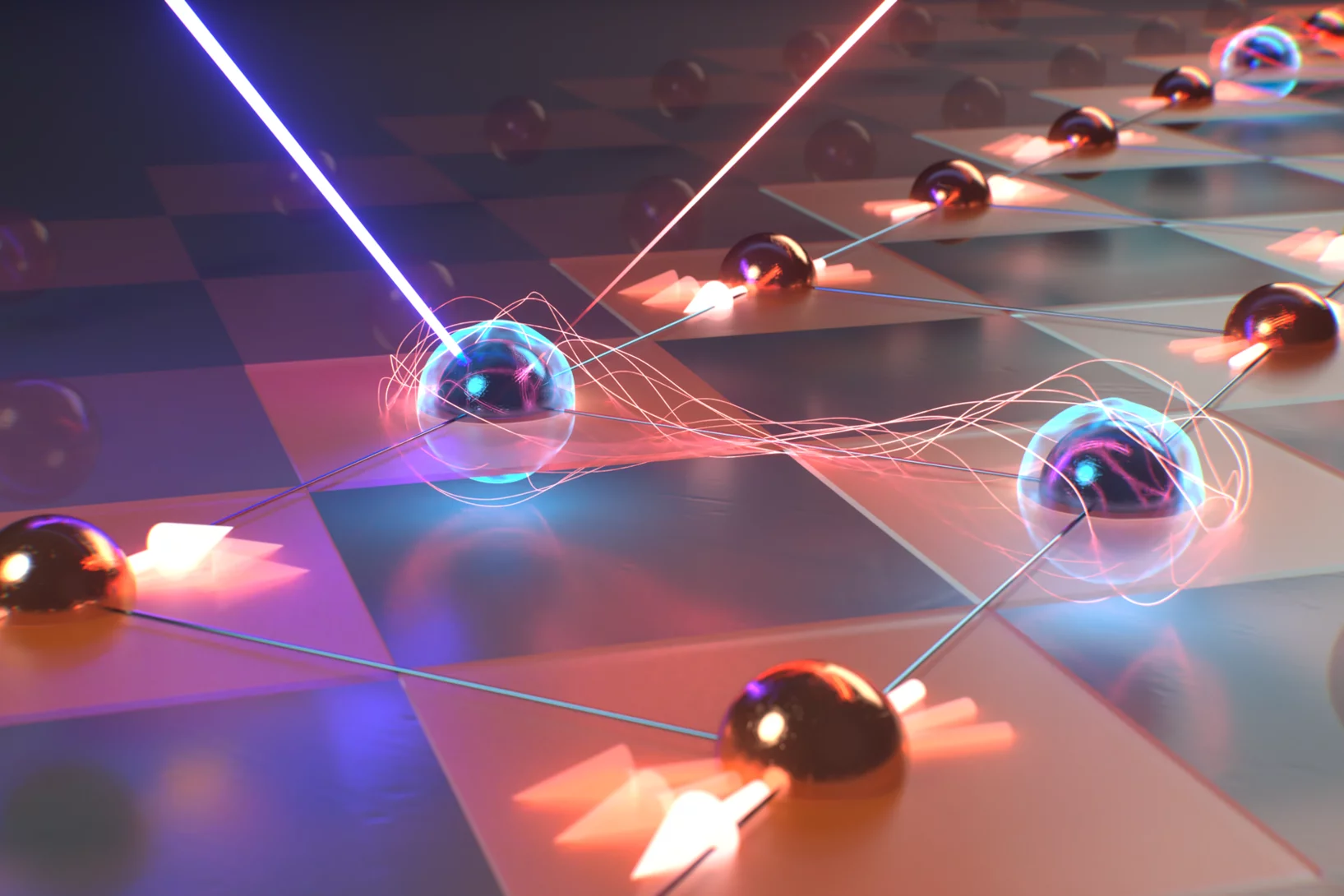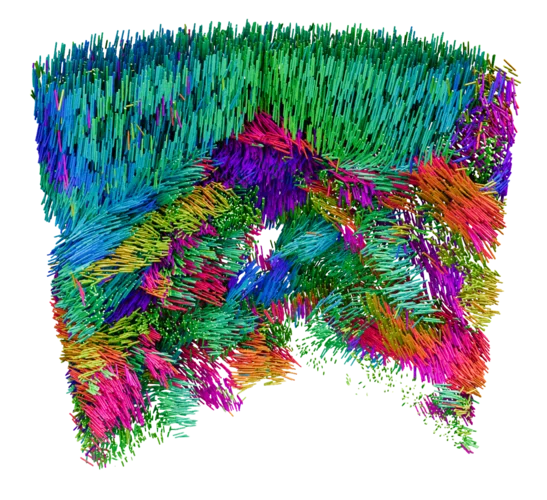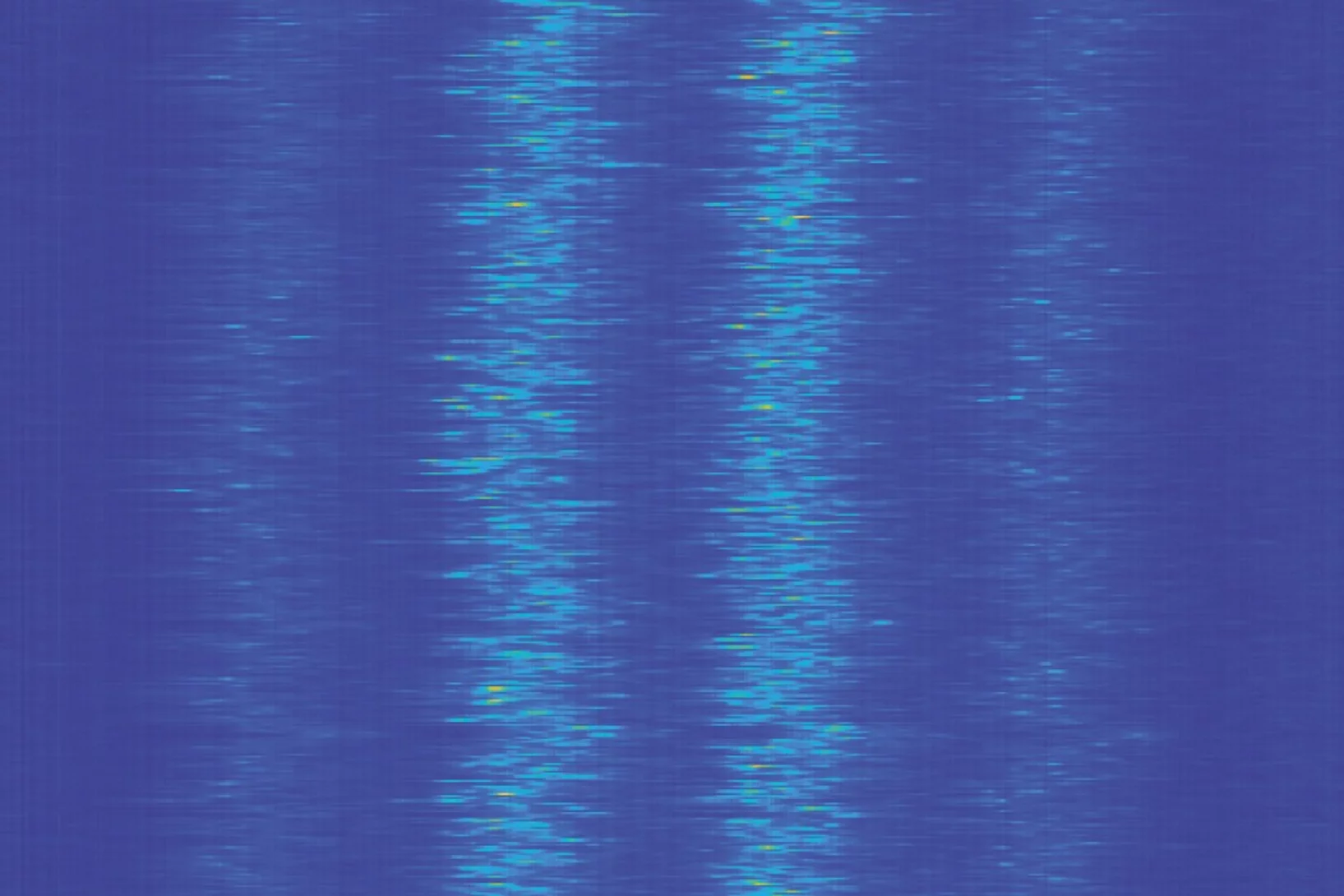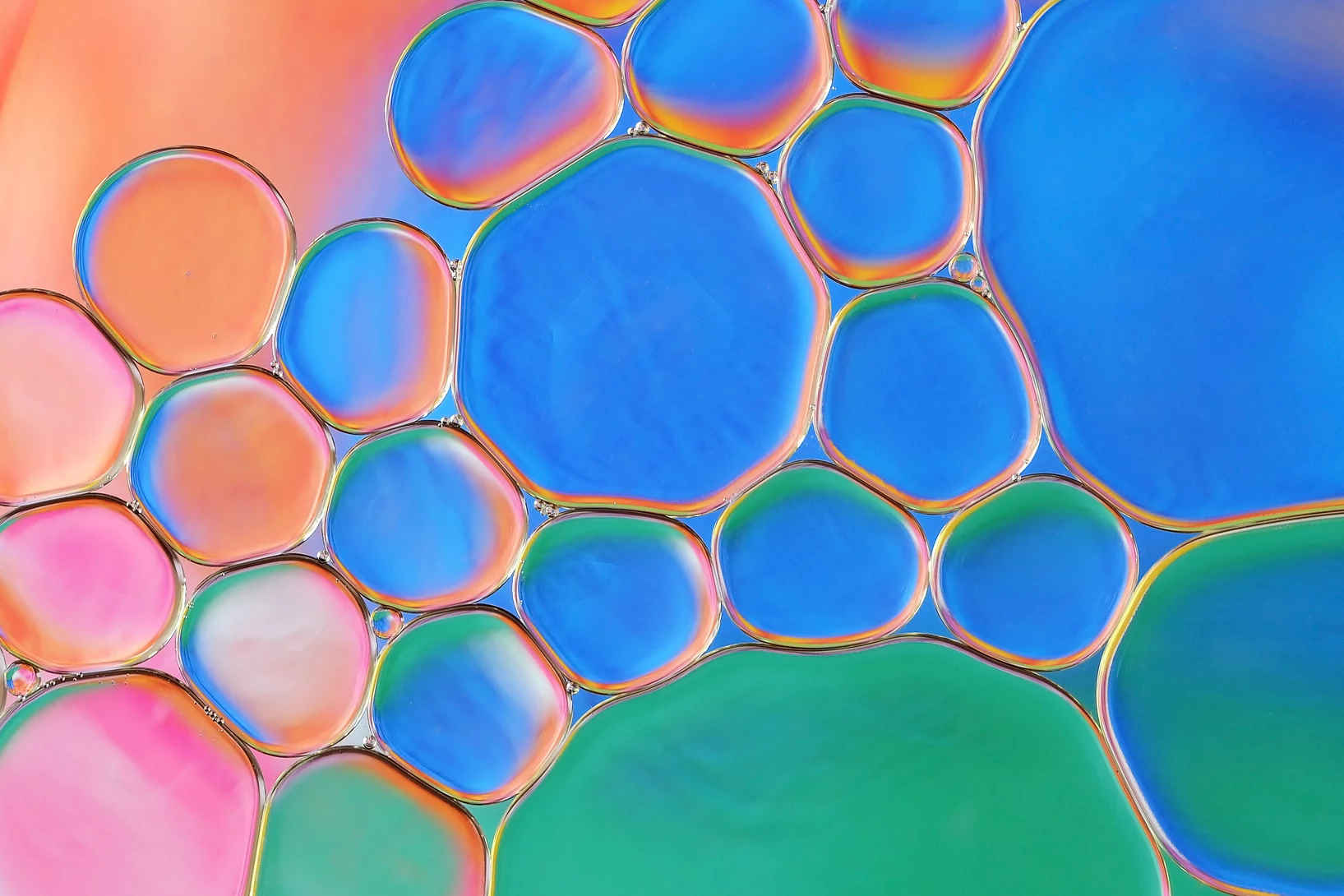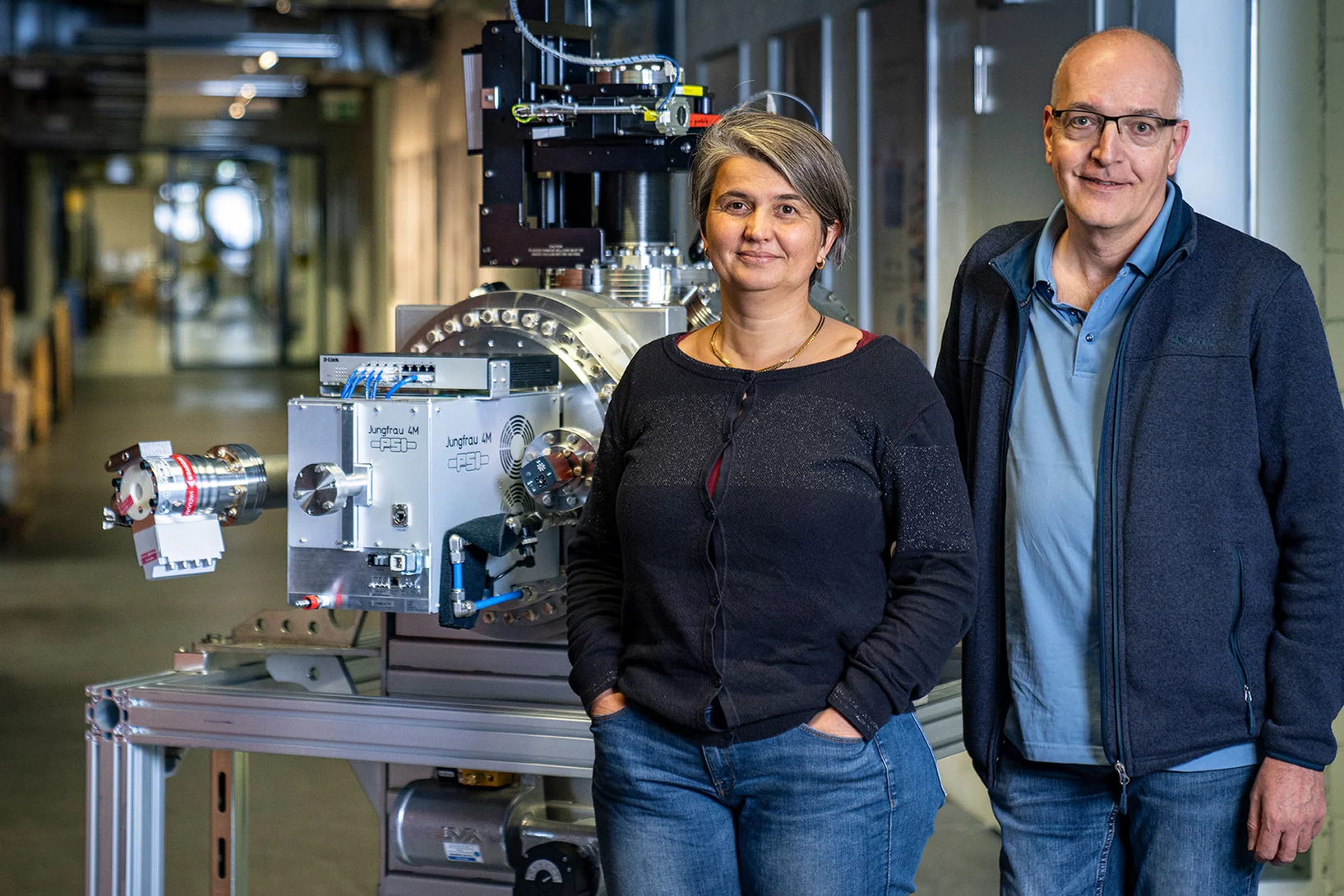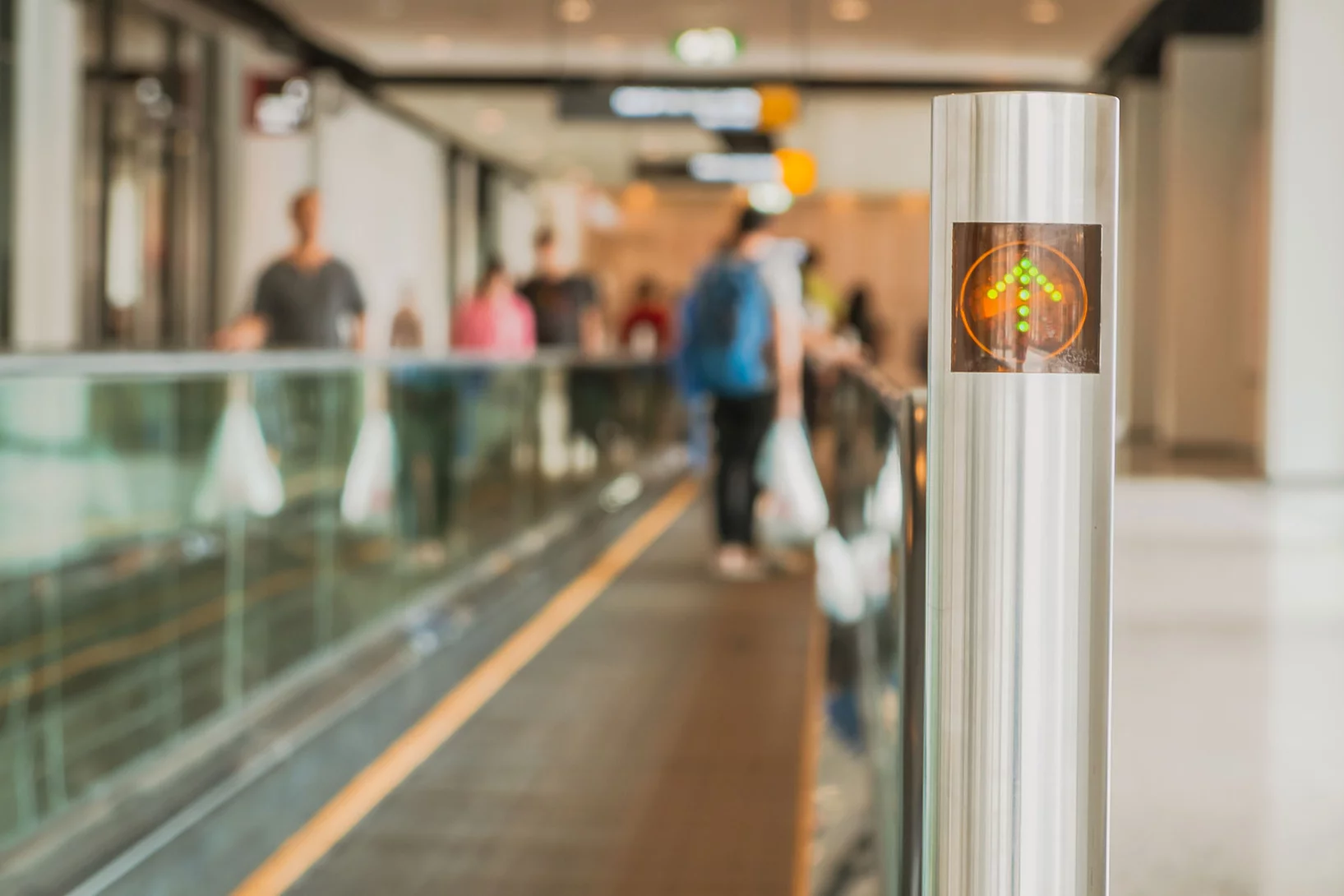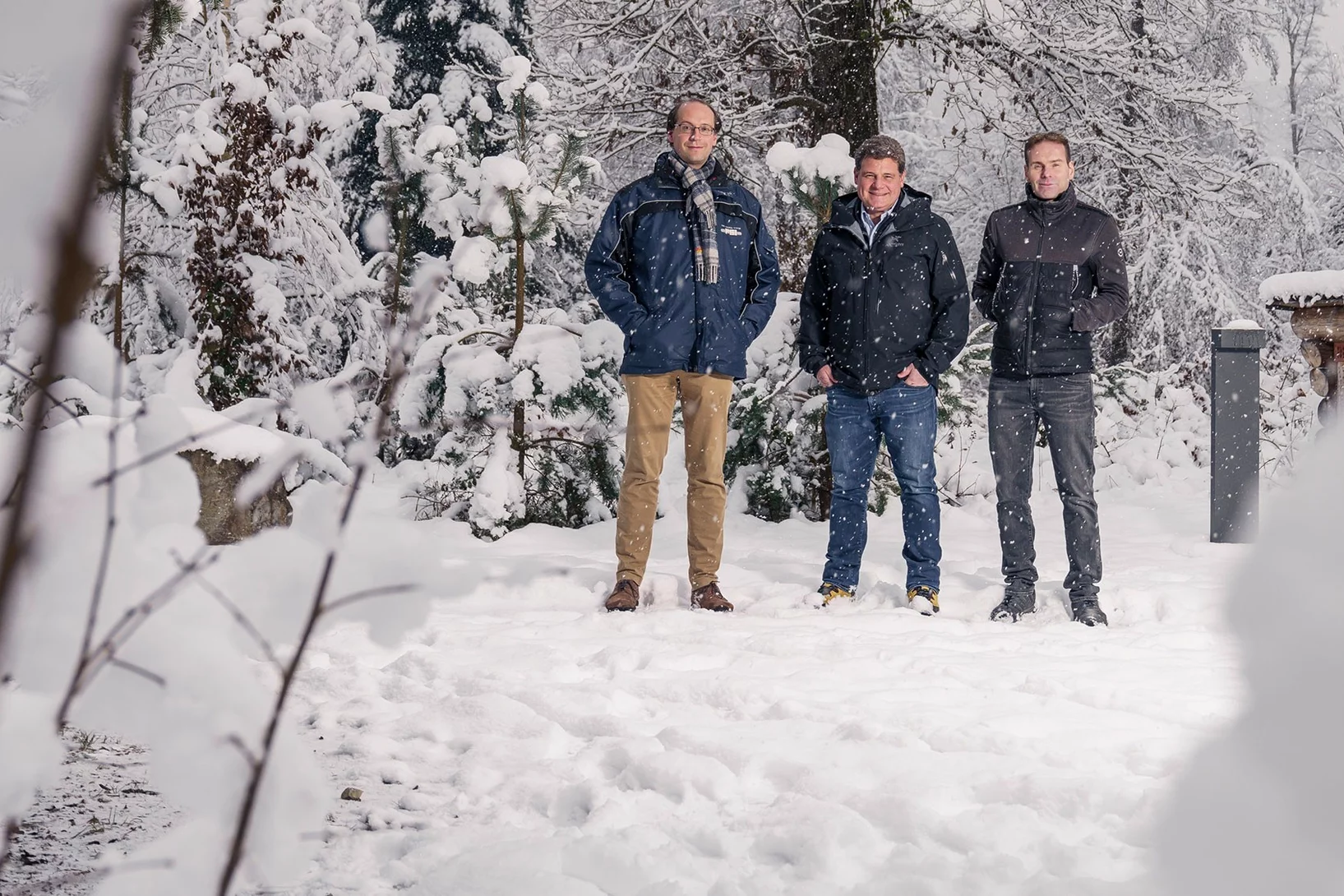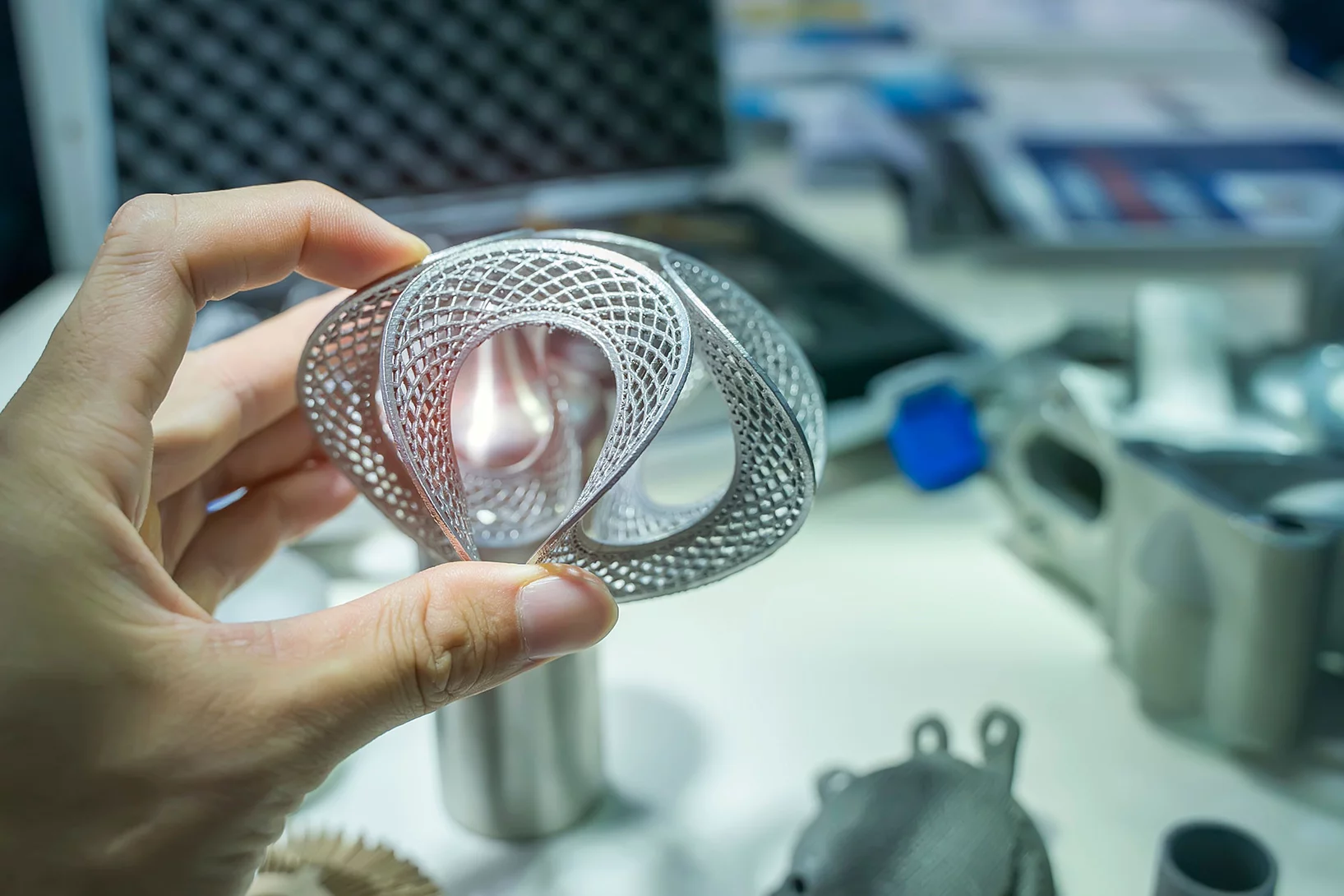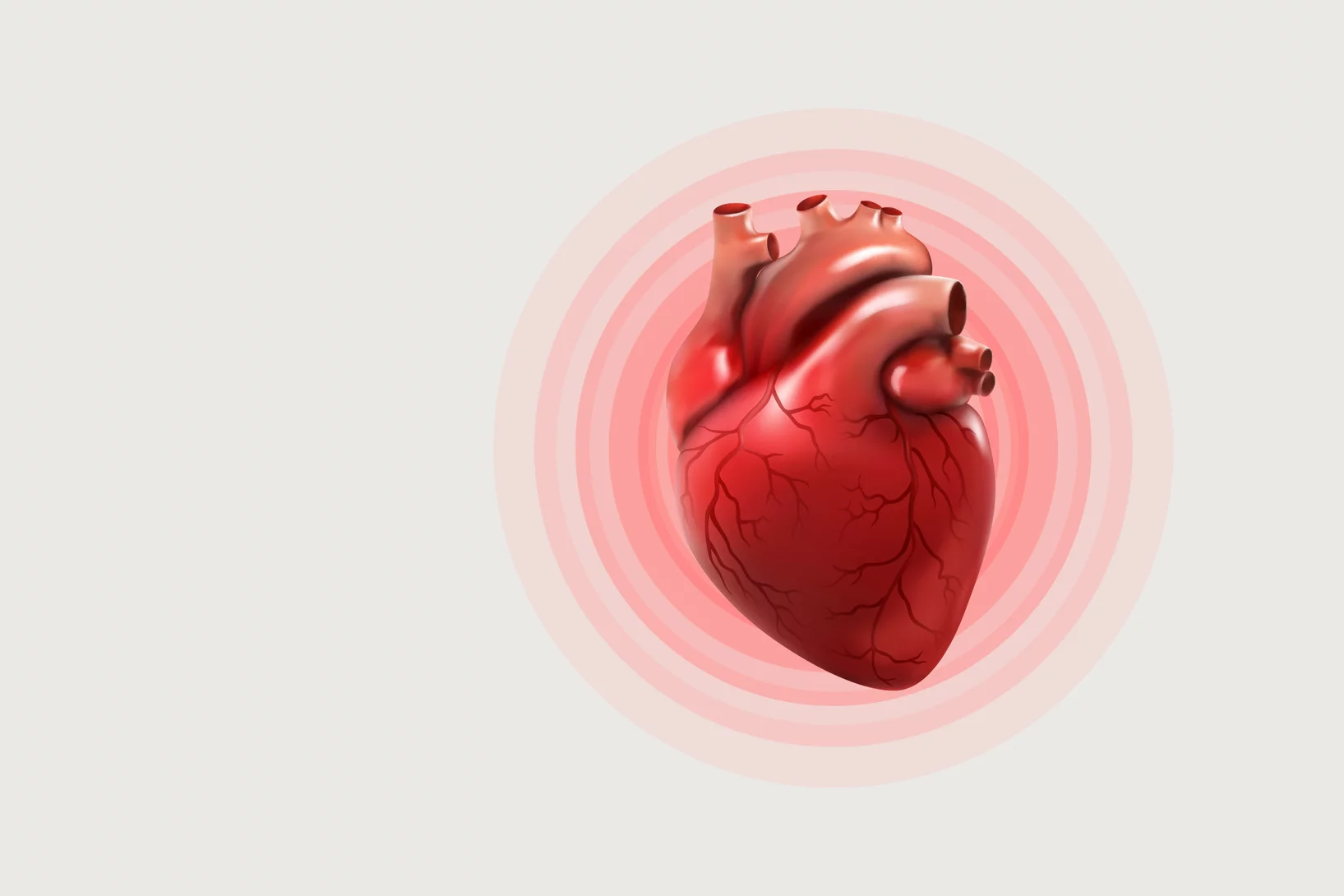Steering magnetic textures with electric fields
Neutrons reveal a new way to control magnetism at the nanoscale
Stabilising fleeting quantum states with light
X-rays from SwissFEL probe emergent properties of quantum materials
Correcting quantum errors with neutral-atom architectures
Wenchao Xu talks about the benefits and challenges of building quantum computers from neutral atoms.
Des scientifiques réalisent une mesure attoseconde record au SwissFEL
Les scientifiques du SwissFEL peuvent mesurer des impulsions de rayons X avec une résolution temporelle de l’ordre de l’attoseconde.
A new dimension of complexity for layered magnetic materials
X-rays reveal magnetic phenomena driven by interactions between the layers of a kagome ferromagnet
Mapping the Nanoscale Architecture of Functional Materials
A new X-ray technique reveals the 3D orientation of ordered material structures at the nanoscale, allowing new insights into material functionality.
Together for Science with Neutrons, Muons and X-rays
Strategic partnership between research facilities in UK and Switzerland will create new capabilities to address global challenges using neutrons, muons and X-rays.
Neat, precise and brighter than ever
Researchers at SwissFEL succeed in improving the temporal coherence of XFEL pulses
New benchmark helps solve the hardest quantum problems
Quantum many-body problems involve the highly complicated process of predicting the behaviour of many interacting quantum particles. A newly developed benchmark helps to solve these problems.
Kagome breaks the rules at record breaking temperatures
Discovery of quantum phenomenon at accessible temperatures could be useful for quantum technologies.
Orbitronics: new material property advances energy-efficient tech
Discovery of orbital angular momentum monopoles boosts the emerging field of orbitronics, an energy-efficient alternative to electronics.
Excited About SLS 2.0!
Researchers tell us why they are excited about SLS 2.0 and more brilliant light for science
Nobel Prize winner Anne L’Huillier visits SwissFEL
X-ray free-electron lasers could unlock the next frontier in attosecond research
Protein droplets likely don’t cause Parkinson’s
Study deepens our understanding of neurodegenerative diseases linked to protein aggregation.
Slipping a note to a neighbour: the cellular way
Study reveals how drug molecules bind in channels between neighbouring cells, changing intercellular communication.
Nature’s sunscreen and other SwissFEL stories
From DNA repair to catalysts: how the Alvra experimental station at SwissFEL has developed into a special tool for biology and chemistry research.
What will the SLS 2.0 upgrade mean for experiments?
Tighter beams, brighter light and extended photon energies open new experimental possibilities.
Developing detectors to transform science with light (part 2)
Part II: Why detecting soft X-rays is hard, and how a new breakthrough is set to transform low energy X-ray science.
Charge fractionalisation observed spectroscopically
Quantum mechanics tells us that the fundamental unit of charge is unbreakable – but exceptions exist.
Developing detectors to transform science with light (part 1)
Part I: How the Jungfrau detector went from inception to perfection to ubiquity.
Altermagnetism proves its place on the magnetic family tree
Experiments at the Swiss Light Source SLS prove the existence of a new type of magnetism, with broad implications for technology and research.
Solid-state qubits: Forget about being clean, embrace mess
So says new recipe for dense arrays of qubits with long lifetimes.
Dichotomous Electrons: Travelling without Moving
Neutron scattering experiments give new understanding of how localized and free-flowing electrons collaborate to create material functionality.
SwissFEL: a next generation tool for Attosecond Science
The 2023 Nobel Prize in Physics recognises attosecond science’s pioneers. Past and future, this field’s evolution is entwined with SwissFEL.
Listening for Defects as They Happen
Experiments at the Swiss Light Source SLS help resolve a long-standing debate surrounding metal 3D laser printing.
The secret life of an electromagnon
SwissFEL sheds light on how lattice and atomic spins jiggle together.
Terbium-161: new radionuclide therapy hits the clinic
Highly targeted cancer treatment has the potential to eliminate ultra-small cancer lesions that cause disease recurrence.
A gold standard for computational materials science codes
The most comprehensive verification effort so far on computer codes for materials simulations.
Thank You SLS
Our beamline scientists look back on 22 years of brilliant science made possible by the Swiss Light Source SLS.
Unveiling ultra-thin electron liquids in silicon
Soft X-rays enable scientists to visualise non-invasively the electronic properties of ultra-thin dopant layers buried within semiconductor wafers.
Physics against Cancer: How PSI pioneered modern proton therapy
A recently published book tells the story of scientists and physicians at PSI developing a revolutionary technique to treat cancer.
Beamline innovation could enable treatment within a breath
Momentum cooling could enable shorter treatment times for patients undergoing radiotherapy with protons, circumventing the problems of internal organ motions.
How PSI helped realise BEATS, a new beamline in Jordan
The “BEAmline for Tomography at Sesame” was recently inaugurated as the fifth beamline at the SESAME synchrotron facility.
Hairy cells: How cilia’s motor works
Understanding this motion may help to tackle health problems that affect cilia, which range from fertility issues to lung disease and COVID-19.
Tender X-rays show how one of nature’s strongest bonds breaks
Short flashes of an unusual kind of X-ray light at SwissFEL and SLS bring scientists closer to developing better catalysts to transform the greenhouse gas methane into a less harmful chemical.
Mirror, mirror on the wall…
…. Now we know there are chiral phonons for sure
X-rays look at nuclear fuel cladding with new detail
Micro-beam measurements at the Swiss Light Source SLS give insights into the crystal structure of hydrides that promote cracks in nuclear fuel cladding.
Laura Heyderman elected Royal Society Fellow
Laura’s nomination recognises almost 30 years of research into magnetic materials and magnetism on the nanoscale.
When electrons dress up in light
Light – the Fifth Element of Materials Science?
Quality control of future transistors: Tackling the challenge of looking at atoms buried in silicon without moving them
Tackling the challenge of looking at atoms buried in silicon without moving them
X-rays make 3D metal printing more predictable
Insights into the microscopic details of 3D printing from the Swiss Light Source SLS could propel the technology toward wider application
Calcium sensor helps us to see the stars
New insight into how the protein calmodulin interacts with an ion channel in the eye could explain how our eyes achieve remarkable sensitivity to dim light.
Muonic X-rays peer into brooch from Roman city
Using Muon Induced X-ray Emission, researchers could reveal the inner composition of a knob-bow fibula, excavated at Augusta Raurica in northern Switzerland.
A star is born
Swiss Light Source SLS reveals complex chemistry inside ‘stellar nurseries’
How to squash things carefully
A new in situ uniaxial pressure cell at Paul Scherrer Institute PSI gives scientists unrivalled control to tweak quantum materials microscopically and tune their properties.
Unconventional superconductivity found in kagome metal
Physicists using muon spin spectroscopy at PSI make the missing link between their recent breakthrough in Nature and unconventional superconductivity
X-ray tomography helps understand how the heart beats
Researchers at the Swiss Light Source SLS use X-ray phase contrast imaging to study a heart in action as it beats.
Making the most of our data
New initiatives will develop open data practices in key strategic areas including electron microscopy and materials science at Paul Scherrer Institute PSI.


